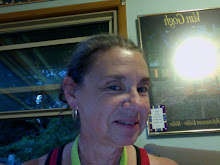So Dr. Neil Fiore, whose book The Now Habit: A Strategic Program for Overcoming Procrastination and Enjoying Guilt-Free Play
Fiore tells us that the "critical, logical left-brain faculty," working in concert with our reptilian, fight-or-flight stress response, feeds procrastination. Especially for those of us who rely on creativity for our chosen work, that linear thought process that is the hallmark of the left brain must be suspended if we are to begin, and proceed through the first draft of a project.
Trying to cram all the emotion and experience of spontaneous creative idea into a linear form is one of the major causes of creative blocks and procrastination. That’s why it’s important to know how to use more of your brain, and how to shift into the flow state.Once we have managed to get out of our own way enough to produce something, only then does it make sense to recruit the "inner editor" feared by so many writers, and have her/him take up the task of bringing order and polish to what has been created.
How do we go about "protecting" the "early renderings of a project. . .from overly critical comparison with the ideal and ultimate goal?" Here's where the flow state comes in, providing "a magical bridge from anxiety to tranquility and safety," and "replac[ing] guilt and stress with stress-free focus on the present." In order to learn to focus, and to achieve this desired creativity-friendly state, Dr. Fiore advises two weeks of daily practice of a 1 to 2 minute mini-relaxation exercise, which we can then use before beginning work, after finishing our commute, before and/or after stressful phone calls or meetings, or at any time when stress arises in our working lives. He also suggests, for those who are not adept or experienced at relaxation (Could he be talking about me?), a lengthier relaxation exercise to strengthen the habit. Both exercises can be downloaded from Dr. Fiore's website, as part of a Reference Guide PDF (under the advertisement for the audiobook verson of The Now Habit)
Everything lately is leading me in this direction. Can calmness have a "siren call?"













No comments:
Post a Comment